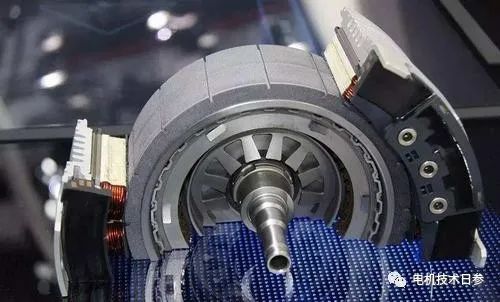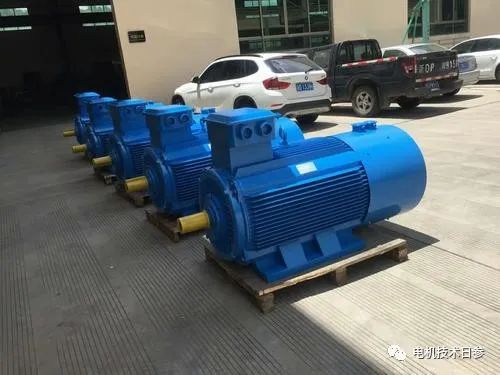Permanent magnet synchronous motor is mainly composed of stator, rotor and housing components. Like ordinary AC motors, the stator core is a laminated structure to reduce iron loss due to eddy current and hysteresis effects during motor operation; the windings are also usually three-phase symmetrical structures, but the parameter selection is quite different. The rotor part has various forms, including permanent magnet rotors with starting squirrel cages, and built-in or surface-mounted pure permanent magnet rotors. The rotor core can be made into a solid structure or laminated. The rotor is equipped with permanent magnet material, which is commonly called magnet steel.
Under the normal operation of the permanent magnet motor, the rotor and the stator magnetic field are in a synchronous state, there is no induced current in the rotor part, no rotor copper loss, hysteresis, and eddy current loss, and there is no need to consider the problem of rotor loss and heat generation. Generally, the permanent magnet motor is powered by a special frequency converter, and naturally has a soft start function. In addition, the permanent magnet motor is a synchronous motor, which has the characteristics of adjusting the power factor of the synchronous motor through the strength of the excitation, so the power factor can be designed to a specified value.
From the perspective of starting, due to the fact that the permanent magnet motor is started by the variable frequency power supply or the supporting frequency converter, the starting process of the permanent magnet motor is easy to realize; similar to the starting of the variable frequency motor, it avoids the starting defects of the ordinary cage-type asynchronous motor.
In short, the efficiency and power factor of permanent magnet motors can reach very high, and the structure is very simple. The market has been very hot in the past ten years.
However, demagnetization failure is an unavoidable problem for permanent magnet motors. When the current is too high or the temperature is too high, the temperature of the motor windings will rise instantaneously, the current will increase sharply, and the permanent magnets will lose their magnetism rapidly. In the permanent magnet motor control, an overcurrent protection device is set to avoid the problem of the motor stator winding being burned, but the resulting loss of magnetization and equipment shutdown are inevitable.
Compared with other motors, the application of permanent magnet motors in the market is not very popular. There are some unknown technical blind spots for both motor manufacturers and users, especially when it comes to matching with frequency converters, which often leads to design The value is seriously inconsistent with the experimental data and must be verified repeatedly.
Post time: Apr-01-2023

